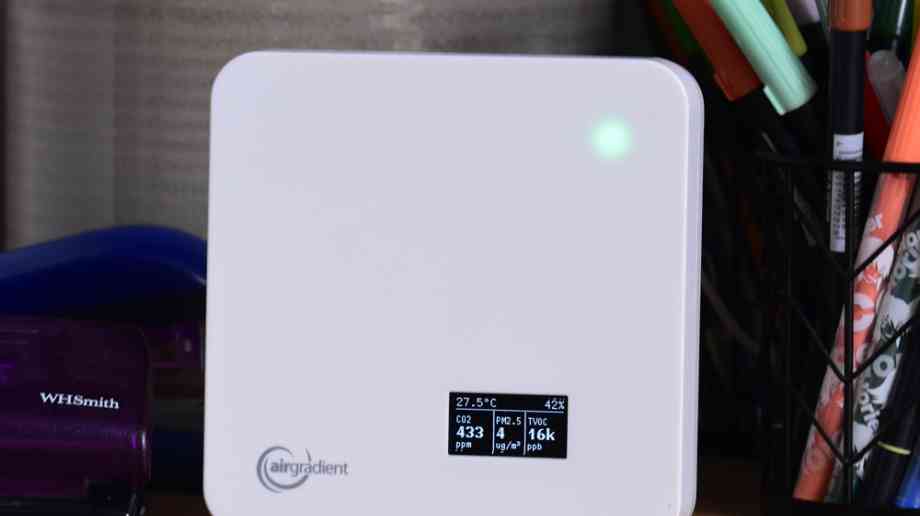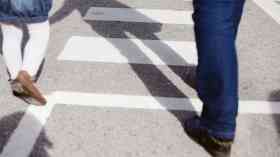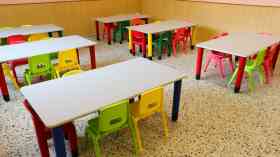
Schools sought to take part in SAMHE air quality project
Poor air quality can impact pupils’ concentration levels and their health, so it is important to understand what is in school air and how to improve it. To do this, the SAMHE project has been launched, with support from the Department for Education, and is recruiting schools to take part
Supported by the Department for Education, the SAMHE project, which stands for Schools’ Air quality Monitoring for Health and Education, will distribute free high spec air quality monitors to schools, linked to a specially designed interactive Web App. This will enable pupils, teachers and school leaders to view and interact with the data on the air they are breathing.
Poor air quality can impact pupils’ concentration levels and their health, so it is important that we know what is in school air and when and how we should take action to improve it.
The quality of our air is important. After all, around 10,000 litres of air passes through each person’s body every day. However, air often contains pollutants that can have impacts on our health, ability to concentrate and levels of attainment. Young people spend lots of time at school so we want to make sure that the air in classrooms is good, and give schools access to data that will enable both students and teachers to make informed decisions about ventilation.
SAMHE is bringing together scientists, pupils and teachers to establish a network of air quality monitors in schools across the UK, creating an unparalleled dataset which will help researchers better understand schools’ indoor air quality. It is funded by the Department for Education and EPSRC (Engineering and Physical Sciences Research Council) and run by a team of scientists, software engineers and communication specialists from six institutions across the UK.
What schools get
Schools will get a free high spec air quality monitor that measures carbon dioxide (CO2), volatile organic compounds (VOCs), particulate matter (PM2.5), temperature(oC) and relative humidity (%). Teachers and pupils will be able to access their data through a specially designed interactive Web App, seeing how air quality changes over the course of hours, days or weeks and months.
The Web App will also offer a range of related activities and experiments, creating opportunities for pupils to be scientists and do hands-on experiments with their monitor. There will be activities for a range of learning aims, group types and session durations (subject lessons, extension activities, extracurricular clubs, careers activities, extended projects, five minute tasks).
There will also be activities for different age groups (key stages 1-4 plus sixth form, and of different types including data analysis, environmental actions (e.g.opening windows), people actions (e.g. exercise), and data entry (e.g. telling us where the monitor is and what activity is taking place).
There will be clear curriculum links for a range of subjects including, but not limited to, Science, Maths and PSHE. Lesson plans, videos and other resources will also be provided.
There will also be activities focussed on career links, including information about the SAMHE project team members and their career pathways.
We’re also designing activities to teach specific skills such as data handling and analysis, developing scientific enquiry, and reasoning with evidence, and also art and design activities.
Taking part in SAMHE will give pupils the opportunity to be part of something bigger, working together with scientists and thousands of other school children towards a cleaner, healthier school environment. It will also look great on a personal statement!
Co-designed with schools
Schools have been involved from early in the project, helping us design, refine and test our plans. About twenty schools helped design the project logo and the initial version of the Web App.
We’re now looking for schools who are willing to help us test the initial version of our Web App before we launch it more widely early in 2023. We want to know how well the Web App works for students and teachers, to ensure it meets schools’ needs.
Could your school be a SAMHE Pioneer School?
We’ll be asking pioneer schools to install their monitor, login to the SAMHE Web App to check that they can see the data it is recording, play with the Web App
to check that it functions properly and try out some of the activities it suggests. This will be an early version of the SAMHE Web App which we’ve been working closely on with a small number of schools to co-design. We’ll be asking schools to share their feedback with us and providing a variety of channels through which they can do so. Of course, Pioneer Schools will have access to the full version of the Web App as soon as it is finished, and in addition will know that they have helped to create it!
If your school would like to become a SAMHE pioneer school and you are available to help with testing starting in November, please sign up now using the registration form on the SAMHE website samhe.org.uk.
Stay in touch
If this is too soon for you, or you do not want to work with the early version of the Web App, you are very welcome to defer your school’s involvement until the Web App is fully up and running, meaning your school would receive a monitor as part of our UK wide launch in early 2023. You can stay in touch with developments by following @SAMHEproject on twitter or using the contact form on our website to sign up to the SAMHE newsletter.
Wider context and connections
SAMHE is a follow on from the CO-TRACE project, which monitored CO2, temperature and humidity in a limited number of schools, with the aim of reducing the spread of Covid-19 in schools.
It is a collaboration between five UK universities (University of Cambridge, Imperial College London, University of York (through the Stockholm Environment Institute’s York centre), University of Surrey, University of Leeds) and the UK Health Security Agency (UKHSA).
SAMHE also has close links with the TAPAS (Tackling air pollution at school) network, The Association for Science Education (ASE) and the National STEM Learning centre.
Further Information:Latest News
19/12/2025 - 09:54
The Education Committee has expanded its ongoing inquiry into the early years sector to examine how safeguarding can be strengthened in early years settings.
18/12/2025 - 09:25
The UK will be rejoining the Erasmus programme in 2027, following a package of agreements with the EU.
17/12/2025 - 09:31
Ofqual has fined exam board Pearson more than £2 million in total for serious breaches in three separate cases between 2019 and 2023 which collectively affected tens of thousands of students.
16/12/2025 - 09:19
The average funding rates will increase by 4.3% for under 2s, and by almost 5% for 3-and-4-year-olds.
15/12/2025 - 10:30
Local colleges are set to receive £570 million in government funding to expand training facilities in areas such as construction and engineering.







